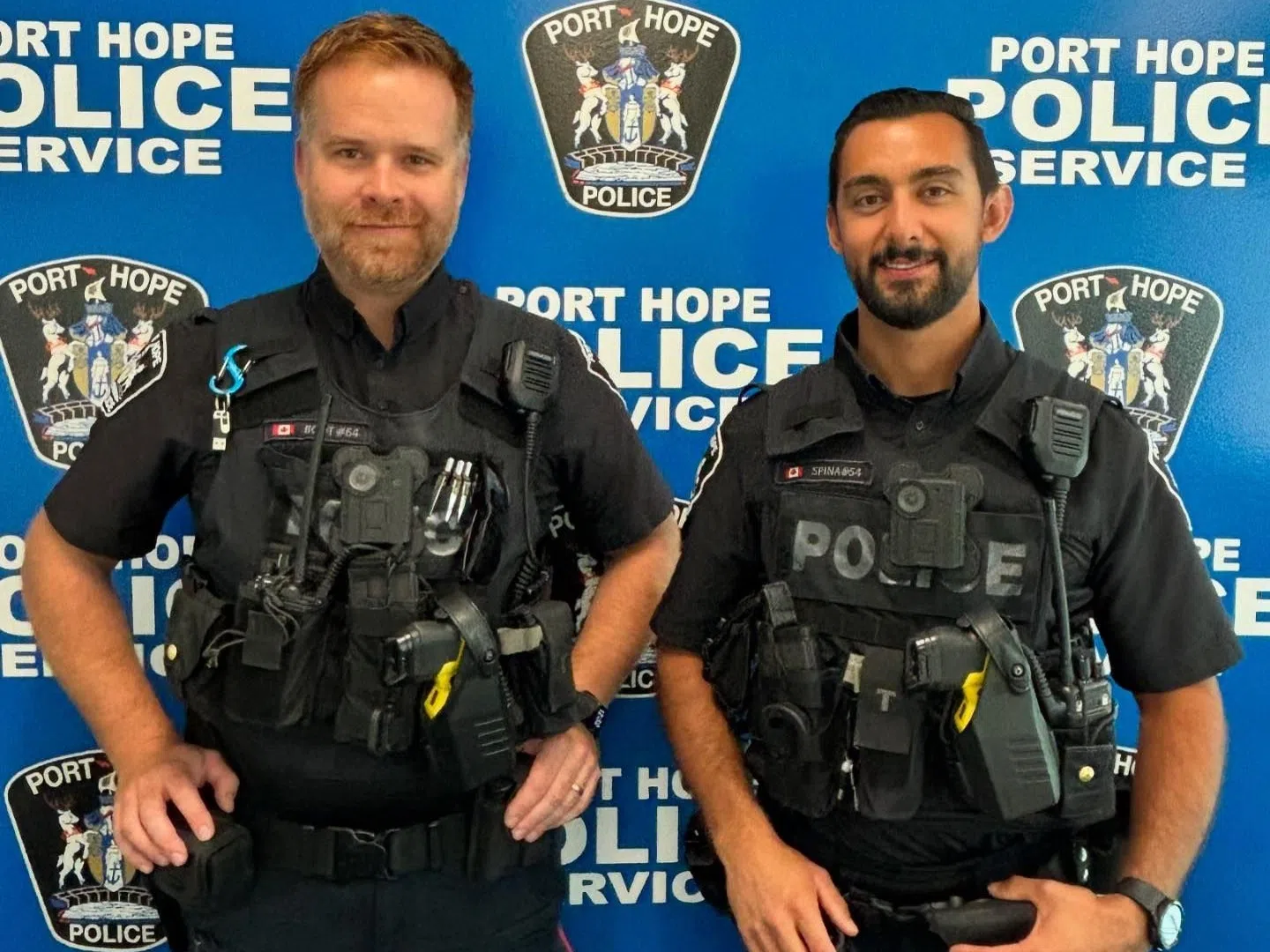
A pilot project involving body-worn cameras (BWC) for front-line officers is winding down – next steps will include hearing from the community, says Port Hope Police Service (PHPS) Chief Tim Farquharson.
Earlier this month, the service announced the rollout of body-worn cameras on a trial basis for its front-line members.
“Our goal is to always be as transparent as possible and to provide the most accurate record available of interactions between police officers and civilians,” said Farquharson, when the service announced the rollout. “We will gauge how this technology enhances the overall safety of officers and civilians in Port Hope.”
The study period is anticipated to wrap towards the end of this week. Following this, a report will also go to the police services board to determine how and if the technology should be implemented permanently.
Farquharson tells us how the pilot has been doing in recent weeks.
During the pilot period, these two officers have been sporting the additional equipment for the entirety of their shifts.
Farquharson says hearing how the community feels about the cameras is crucial.
In terms of a fulsome costing for permanent rollout, those figures aren’t known yet – if/when prices are confirmed, such costs will also be made public, notes Farquharson.
But costs aren’t currently being viewed as “prohibitive.”
In addition to equipment costs, there are likely staff-related costs associated with redaction and transcription – i.e., videos having to be reviewed, redacted, transcribed and whatnot in instances for evidentiary and/or court purposes, as an example.
Farquharson tells us the reason for the exploring this pilot is all about transparency – that piece of it is “really important to us, to be as transparent as possible.”
He notes there are other benefits to the cameras.
“We’re looking at it mainly as a positive technological tool that we can use, and that (the) community can feel (safe about as well,) knowing that our interactions with civilians in our community are video-taped and audio-taped,” explains Farquharson.
Farquharson also notes most police services in Canada now are using either in-car or body-worn cameras – or a combination of both.
In terms of what is in store for the future in Port Hope, the chief says work will continue with the board, the public and officers. He did also note how on the business side of things, the service’s screening checks (which generate revenue) could help with potential taxpayer impacts.
Just like public input, the study aims to gather officers’ input – without buy-in at the service level, that could be challenging, says Farquharson.
And while BWCs weren’t incorporated into earlier strategic planning, consultations with the community have shown that the trust level in Port Hope is extremely high, notes Farquharson. Previously, this was never brought up at that level – even when suggested, it wasn’t a concern outlined during those community consultations, explains Farquharson.
Nevertheless, Farquharson says the service felt this is worth exploring now.
Nearby, the Cobourg Police Service rolled out BWCs in 2022.
(Written by: Sarah Hyatt)
